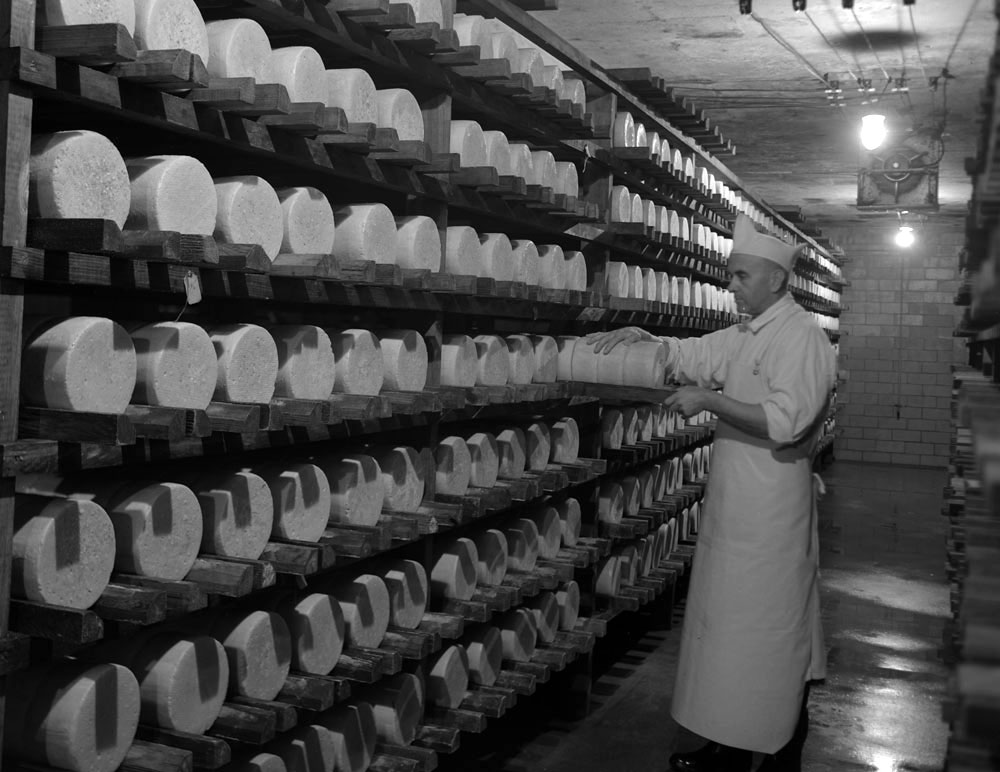Ermite blue cheese is made at a Benedictine monastery called Abbaye Saint-Benoît-du-Lac in Saint-Benoît-du-Lac on Lac Memphremagog, Québec.
It is a mild blue cheese, with tangy aftertones and an aroma of mushrooms. In texture, it is crumbly with a slight grittiness and has no rind.
The cheese is made from pasteurized whole cow’s milk treated with Roquefort penicillium mould.
It ends up semi-soft and cream-coloured inside, with bluish-green veins of mould.
It is formed into 2 kg (4.5 pound) wheels that are aged for five weeks in a ripening room. After that, the rind of mould that has formed is washed away.
The wheels are wrapped in silver foil for shipping and sale.
The factory makes several other cheeses as well. [1]Cheese Products. Abbaye de Saint-Benoît-du-Lac. Accessed March 2022 at https://www.abbaye.ca/en/products/cheese/ The monks still actually manage the cheese factory and its full-time employees.
Ermite’s sister cheese, Bleu Bénédictin Cheese, ends up milder than Ermite, with a different texture.
Website: https://www.abbaye.ca/
History Notes
The monastery was founded in 1912; they started making cheese in 1943. Their first cheese was “Ermite” in that year. [2]Riedl, Sue. Bleu Bénédictin and Ermite cheese. Toronto: The Globe and Mail. 9 December 2009.
At the time, the Trappist monks over at their monastery in Oka, Québec, had the market cornered on artisanal, monastery-produced cheese in Québec. But the Canadian Army had requisitioned almost the entire output of Oka cheese for the war effort. That left the door open in the consumer market for another cheese, which the Benedictine monks took advantage of.

A Benedictine monk inspecting Ermite cheese in the process of curing, Magog, Quebec. Blouin, Guy. National Film Board of Canada. Library and Archives Canada, e011175816. / CC BY 2.0
Sources
CBC News. Monks earning top ranking for their cheese. 23 July 2000. Retrieved August 2010 from http://www.cbc.ca/news/story/2000/07/23/bluechse000723.html
Riedl, Sue. Bleu Bénédictin and Ermite cheese. Toronto: The Globe and Mail. 9 December 2009.


